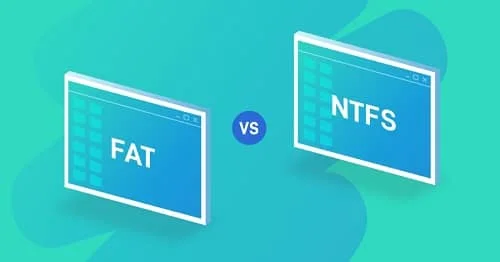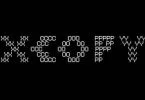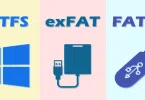In this article, we learn what is FAT32, NTFS file system and what is the difference between FAT32 and NTFS file systems.
What Is the FAT32 File System?
Standing for File Allocation Table, it’s the oldest and the most experienced file system in the history of computing. The story started in 1977 with the original 8-bit FAT file system intended as an antecedent to Microsoft’s Standalone Disk Basic-80, which was launched for Intel 8080-based NCR 7200 in 1977/1978, a data entry terminal with 8-inch floppy disks. It was coded by Marc McDonald following discussions with Microsoft’s co-founder Bill Gates.
Further utilization of the FAT File System or FAT Structure as it was called referred to earlier, was done in Microsoft’s 8080/Z80 platform-based operating system MDOS/MIDAS written by Marc McDonald, who was Microsoft’s first salaried employee. In the subsequent years, the FAT file system advanced to FAT12, FAT16, and finally, FAT32 that has been synonymous with the word file system when we have to deal with external storage media like removable drives.
FAT32 was a surmount to the limited volume size offered by the FAT16 file system. The 32-bit File Allocation Table was released in August 1995, with the Windows 95 operating system. It allows you to store files of size up to 4 Gigs and the maximum disk size can go up to 16TB. So, the fatty file system can’t be used to install heavy apps or store large files, that’s why modern Windows uses a new file system known as NTFS, for which we don’t have to worry about the file size and disk size limits.
The FAT32 file system is perfect for storage devices like flash drives but you’ll have to make sure you don’t have an individual file larger than 4 GB. It has been widely implemented beyond the realm of computers, like gaming consoles, HDTVs, DVD & Blu-Ray players, and practically any device with a USB port. All versions of Windows, Linux support the FAT32 file system, even Apple’s Mac provides complete support for it.
What Is NTFS File System?
Another Microsoft proprietary file system was introduced in 1993 with their Windows NT 3.1 coming into existence. It offers inexhaustible file size limits and you won’t run out of it anytime soon. The development started in the mid-1980s as the result of an association between Microsoft and IBM to develop a new age operating system with better performance in terms of graphics. However, their friendship didn’t last long and the two parted ways consequently developing their own version of the new file system. IBM made HPFS which was used in the OS/2 operating system and the Redmond created NTFS v1.0 released with Windows NT 3.1.
The NTFS or New Technology File System offers a theoretical file size of 16 EB – 1 KB which is 18,446,744,073,709,550,592 bytes. Well, your files aren’t that much huge, I guess. Its development team included Tom Miller, Garry Kimura, Brian Andrew, and David Goebel. NTFS v3.1 was launched with Microsoft’s Windows XP and it hasn’t been changed much since then, although numerous additions like partition shrinking, self-healing, and NTFS Symbolic links have been added. Also, the implemented capacity of the NTFS file system is only 256 TB out of the whopping 16 EB – 1 KB which was done with the launch of Windows 8, for which Microsoft ended support last week and Windows Server 2012.
Other notable features include reparse points, sparse file support, disk usage quotas, distributed link tracking, and file-level encryption. The NTFS file system supports backward compatibility with the previous versions and it’s a journaling file system that proves to be an important tool when it comes to reviving a corrupt file system. It maintains a Journal, a data structure that keeps track of any potential modifications to the file system and is used to recover the file system.
Difference between FAT32 and NTFS – Comparison
| Feature | FAT32 | NTFS |
| Compatibility | Windows, Mac, Linux, gaming consoles, practically any device with a USB port. | Windows, Mac (Read-only), Linux (read-only for some distributions), Microsoft Xbox One. |
| Pros | Cross-platform compatibility, lightweight. | Inexhaustible limits for file and partition size. |
| Cons | Limited file size (upto 4GB) and partition size (upto 16TB) | Limited cross-platform compatibility. |
| Usage | Removable storage devices. | Best for internal hard drives. Use it for Windows system drive and any other system partition which may be used to install software. |






Leave a Comment